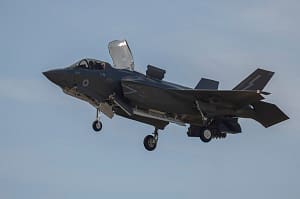The Israel-Gaza-Hamas conflict has once again erupted, causing significant loss of life and widespread suffering.
To understand this complex situation, it is crucial to examine the historical context and the humanitarian realities of the Gaza Strip. This op-ed by Roberto Mazza will provide a comprehensive overview, merging multiple narratives into a coherent narrative.
The Historical Background
The Gaza Strip is a small piece of land, roughly twice the size of Washington, D.C., sandwiched between Israel and Egypt on the southeastern Mediterranean coast. Its history is deeply intertwined with the larger Israeli-Palestinian conflict. Once part of the Ottoman Empire, Gaza was under British control from 1918 to 1948 and subsequently occupied by Egypt until 1967.
Read more on Israel-Hamas war:
Hezbollah warned of a ‘deadly’ reaction if attacks continue as ‘the US is giving full backing’
Attacks in Israel ‘was provoked’ amid ‘years of horrific occupation’ by the Israeli’s as war crimes are ongoing
US put 2,000 troops on standby as Iran vows ‘pre-emptive action’ within ‘hours’ against Israel
In the 1967 Six-Day War, Israel captured the Gaza Strip, along with the West Bank. These territories are vital to both Israelis and Palestinians, with Palestinians seeing them as part of their future state.
Israeli Occupation and Conflict
Israel held Gaza under occupation for 38 years, establishing 21 Jewish settlements. This occupation led to significant tension and violence, culminating in the First Intifada, a period of protests and violence against Israeli rule.
It was during this time that Prime Minister Yitzhak Rabin expressed his frustration, wishing Gaza would “sink into the sea.” This period also laid the groundwork for the Oslo Accords in 1993, which aimed to address the “right of the Palestinian people to self-determination.”
The Oslo Accords gave the Palestinians limited self-rule and led to the establishment of the Palestinian Authority (PA). In 2005, as part of the peace process, Israel unilaterally withdrew from Gaza, dismantling 21 settlements and withdrawing 9,000 settlers.
Hamas Takes Control
In 1948, Ahmed Yassin, who founded Hamas, was uprooted & ethnically cleansed from his home at age 12. In 1973, he founded an Islamic charity in Gaza focused on education, social services, preaching, youth sports, cultural activities & social services for the poor & orphans.
In the 1980s, Israel pursued a “divide & rule” policy. To weaken the PLO, it supported & funded the Islamic charity. Following the First Intifada In 1988, a Hamas leader, Mahmoud al-Zahar, proposed a peaceful resolution. He submitted his proposal to Yitzhak Rabin, the then Israeli minister of defense, in a meeting on June 1, 1988.
It not was until after Feb. 1994, when Baruch Goldstein, a Jewish settler, massacred 29 praying Muslims in the Ibrahimi Mosque in Hebron in the West Bank during the month of Ramadan, that Hamas got radicalized & fully embraced attacks on civilians and the became dedicated to the destruction of Israel.
In 2006, Hamas won free and fair Palestinian legislative elections in the occupied Palestinian territories. By this time, there were many indications Hamas sought to moderate. “We agree to a [Palestinian] state on pre-67 borders, with Jerusalem as its capital with genuine sovereignty without settlements but without recognizing Israel…. we have offered a truce if Israel withdraws to the 1967 borders, a truce of 10 years ” (Khaled Meshaal, April, 2008). This electoral victory marked a shift in Palestinian politics and led to internal conflict with the PA.
The struggle between Fatah and Hamas caused ongoing political and territorial divisions.
While Israel withdrew from Gaza, it imposed a land, air, and sea blockade in 2007, which has caused severe humanitarian issues. International organizations, including the United Nations, have criticized the blockade for its devastating impact on the lives and livelihoods of Gazans.
Gaza is one of the most densely populated places in the world, with over 2 million inhabitants, nearly half of whom are below the age of 15. A staggering 80% rely on international aid for basic services, and the unemployment rate is one of the highest globally.
The humanitarian crisis in Gaza, aggravated by years of conflict and the blockade, has left the people with limited access to clean water, frequent electricity shortages, and dire living conditions. Moreover, the blockade has taken a heavy toll on Gaza’s economy, with the United Nations estimating losses of nearly $17 billion over a decade.
Endless Cycle of Conflict
Gaza’s densely populated urban areas make it susceptible to casualties during conflicts. Israeli military operations, in response to rocket attacks from Gaza, have caused civilian casualties, including children. The current conflict – before October 2023 – has displaced over 137,000 people, exacerbating an already dire situation.
Efforts to resolve this crisis have faltered due to disagreements on issues like the status of Palestinian refugees, Jewish settlements, the status of Jerusalem, and the establishment of a Palestinian state. The Israeli-Palestinian peace process, which began in the 1990s, has not yielded a lasting solution.
The most recent U.S.-brokered peace plan, termed the “deal of the century,” failed to gain traction. Hamas, still in control of Gaza, has repeatedly offered a long-term truce in exchange for ending the blockade. Israel insists that Hamas must recognize Israel and renounce violence before negotiations can proceed.
Looking Ahead
As the current violence continues, it is clear that a comprehensive and sustainable solution to the Israel-Gaza-Hamas conflict remains elusive. To address this longstanding crisis, it is essential to consider not only security concerns but also the deep-seated political, social, and humanitarian issues that have perpetuated it.
Only a balanced approach that respects the rights and aspirations of both Israelis and Palestinians can pave the way to a peaceful coexistence.
While there is no easy solution, it is essential for the international community to intensify its efforts to bring all parties to the negotiating table and address the root causes of this ongoing conflict. Humanitarian aid and support for the people of Gaza are also critical to alleviate their suffering.
The current crisis should serve as a stark reminder that the status quo is unsustainable, and it is high time to seek a just and lasting resolution to this deeply rooted conflict.






Leave a Comment